- Your homework:
- The Earth as Icosahedron
- Hexagonal faces can't be folded up from a tiling (or
tesselation) of the plane; Octagonal faces can't even be put
together to tile the plane.
Put two hexagons (or octagons) together along an edge. Now try to slip another hexagon (or octagon) in at a vertex along the edge. It can't be done without flattening out the hexagons (and it can't be done at all for the octagon).
So you'll not be able to create a platonic solid from these (or any other regular polygons).
- Logos:
- here they are, the Platonic graphs.
- All have F-E+V=2.
- The soccer ball has 32 faces, 60 vertices, and 90 edges. F-E+V=2.
- Our next test is next time, Tuesday, 11/4. It will cover Fibonaccis, Golden Mean and Rectangle, Pascal, and the Platonics.
- What questions do you have?
- Remember that you can use your platonic solids as a cheat sheet.
- The Enemy of My Enemy (complete graphs)
- One focus of this reading is negative numbers. It
was the Indians (of Asia) who put negative numbers on a
firm foundation (as well as zero), in about the 6th
century AD.
"...you can't see negative 4 cookies and you certainly can't eat them -- but you can think about them...." ("and you have to", says our author).
- One of the confusing aspects of negative numbers
from Strogatz's perspective is that the product of two
negative numbers is a positive number.
- But then Strogatz goes on to use the context of
social interactions (negative and positive) to discuss
how we maintain stable relationships.
And the key to understanding stability in three-way social relationships is that the product of two interactions (signified by either +1 or -1) must be equal to the other: so that if two legs are positive, the third in the triangle must be positive; if one leg positive, and the other negative, then the third leg must be negative as well.
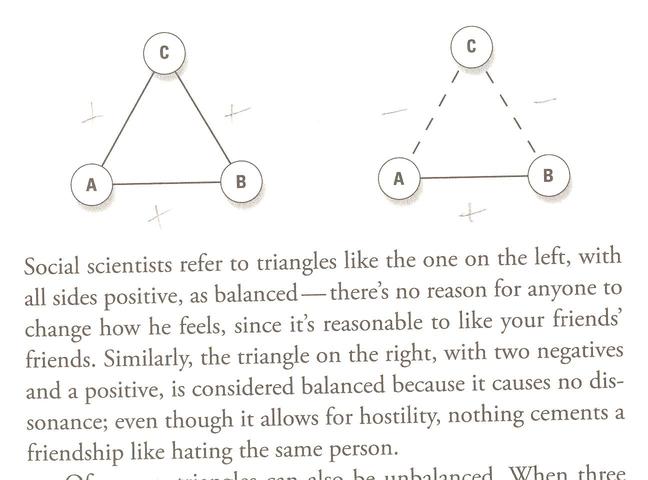
Strogatz sums up the second case above in the familiar saying that "The enemy of my enemy is my friend".
The following (two) graphs are unbalanced:
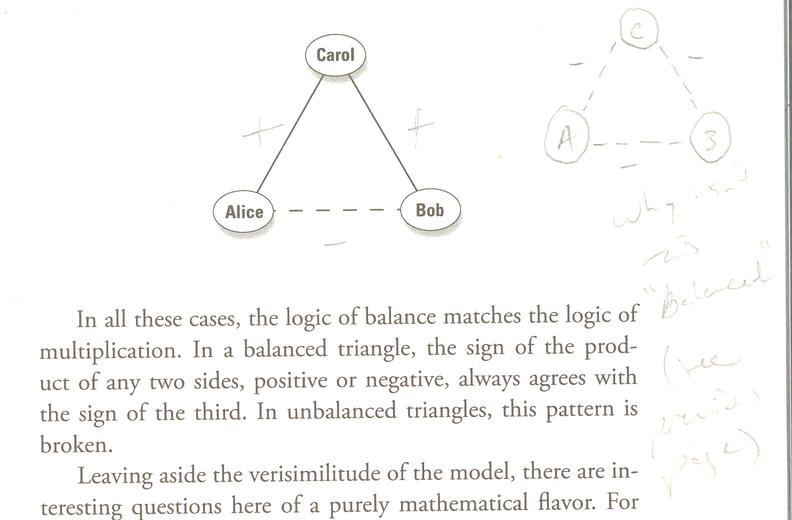
Finally Strogatz shows how historical relationships settled down into this pattern of stability: in "...the run-up to World War I. The diagram that follows shows the shifting alliances among Great Britain, France, Russia, Italy, Germany, and Austria-Hungary between 1872 and 1907."
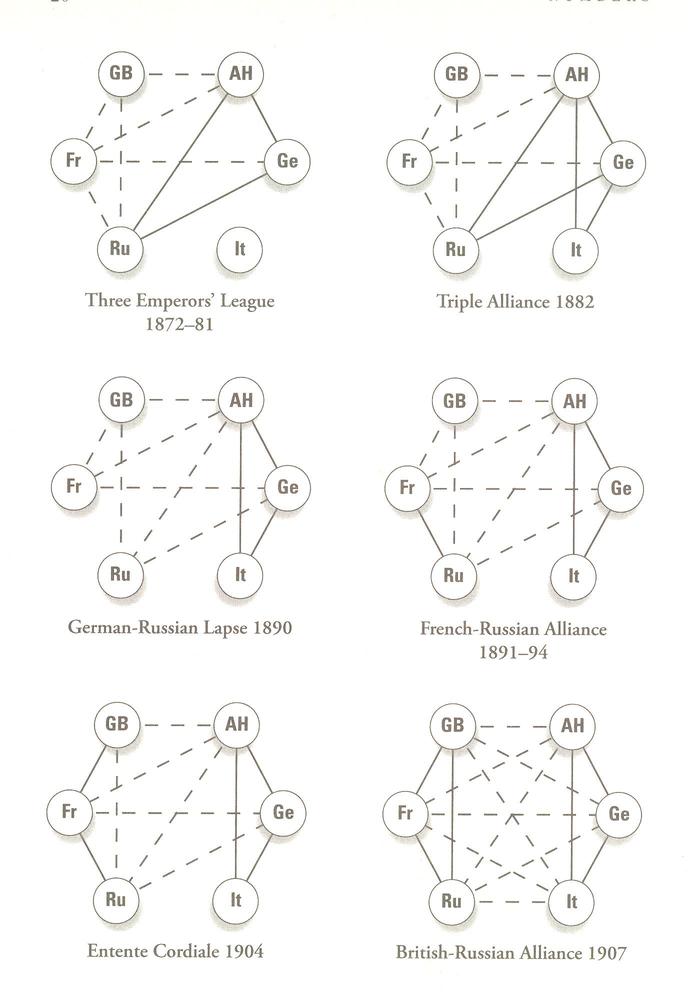
The bottom right graph (complete!) is the only stable configuration, "...balanced, but on the brink of war."
- One focus of this reading is negative numbers. It
was the Indians (of Asia) who put negative numbers on a
firm foundation (as well as zero), in about the 6th
century AD.
- Untangling the Web (directed graphs)
This section describes how Google uses the "PageRank" algorithm to determine the importance of a webpage (and hence where it falls in the search results for a particular topic).
Graphs provide a useful way of illustrating how pages interact. If there's a link between two pages, then a directed arrow indicates it. Here's the graph of the "toy web" Strogatz considers, with the final rankings:
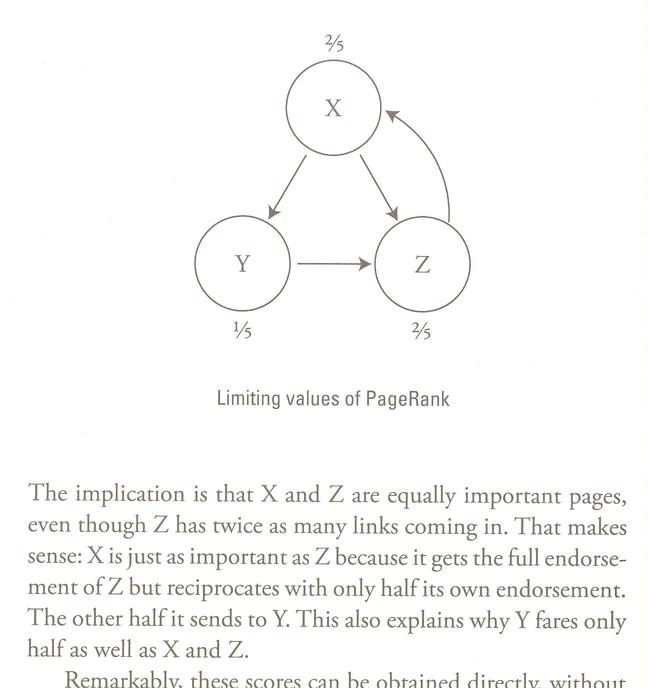
He justifies this ranking in a series of graphs, and a set of equations on page 195. Let's see how these equations work (we'll use this Excel spreadsheet).
Notice that I've written the equations with an index,
, rather than with the primes. That's because we keep updating the values to get them at the
stage, and we update based on the previous stage's (
) values.
We just "do it again", over and over....
This strange algebra is from the field of mathematics called "linear algebra".
- Group Think (complete, directed graphs)
In this reading, we discover how to rotate and flip our mattress over the course of the year, so that the mattress gets even wear (while avoiding having to flip the mattress end-over-end the long way -- the "death-defying vertical flip").
"Spin in the spring, flip in the fall" is what some manufacturers suggest.
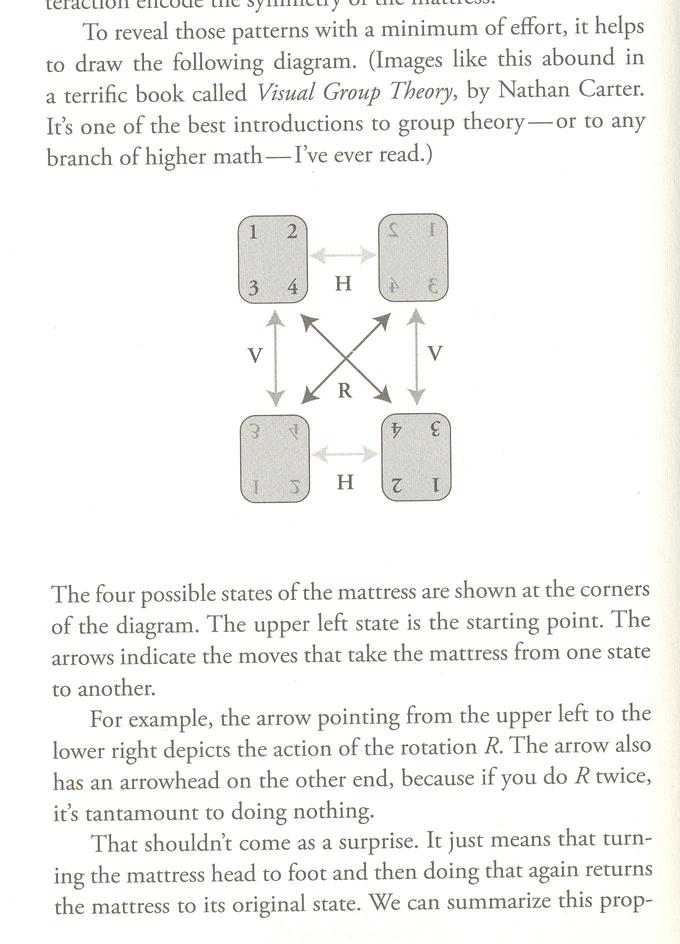
There is a certain amount of curious algebra here:
HR=V means that a horizontal flip followed by a rotation is equivalent to a vertical flip. Using only horizontal flips and rotations, we can achieve each of the four possible configurations of a matress. So over the course of two years, you'll have visited all four configurations of your mattress. Bon Nuit!
- Links are like the links you find in chains: constructed
by "linking" loops (or rings) together.
- Borromean
Rings: "Is it possible to create a link of three loops (or
rings) in such a manner that
they are indeed linked, yet if we
remove any one of the rings the other
two become unlinked?"
- Yes, indeed! Let's try it with rubber bands first.
(Thanks Wikipedia!) - icosahedra, golden rectangles, and
interlocking rings. It turns out that there
are golden rectangles in the heart of an
icosahedron

- Use symmetry!
- How far off golden are we?
- Do you see the icosahedron?
- More on the Borromean rings:
- I always think of them in the context of this quote:
"We must all hang together, or assuredly we shall all hang separately." Benjamin Franklin, at the signing of the Declaration of Independence.
- Led Zeppelin, in the album sleeve of
their album Led
Zeppelin IV used it:
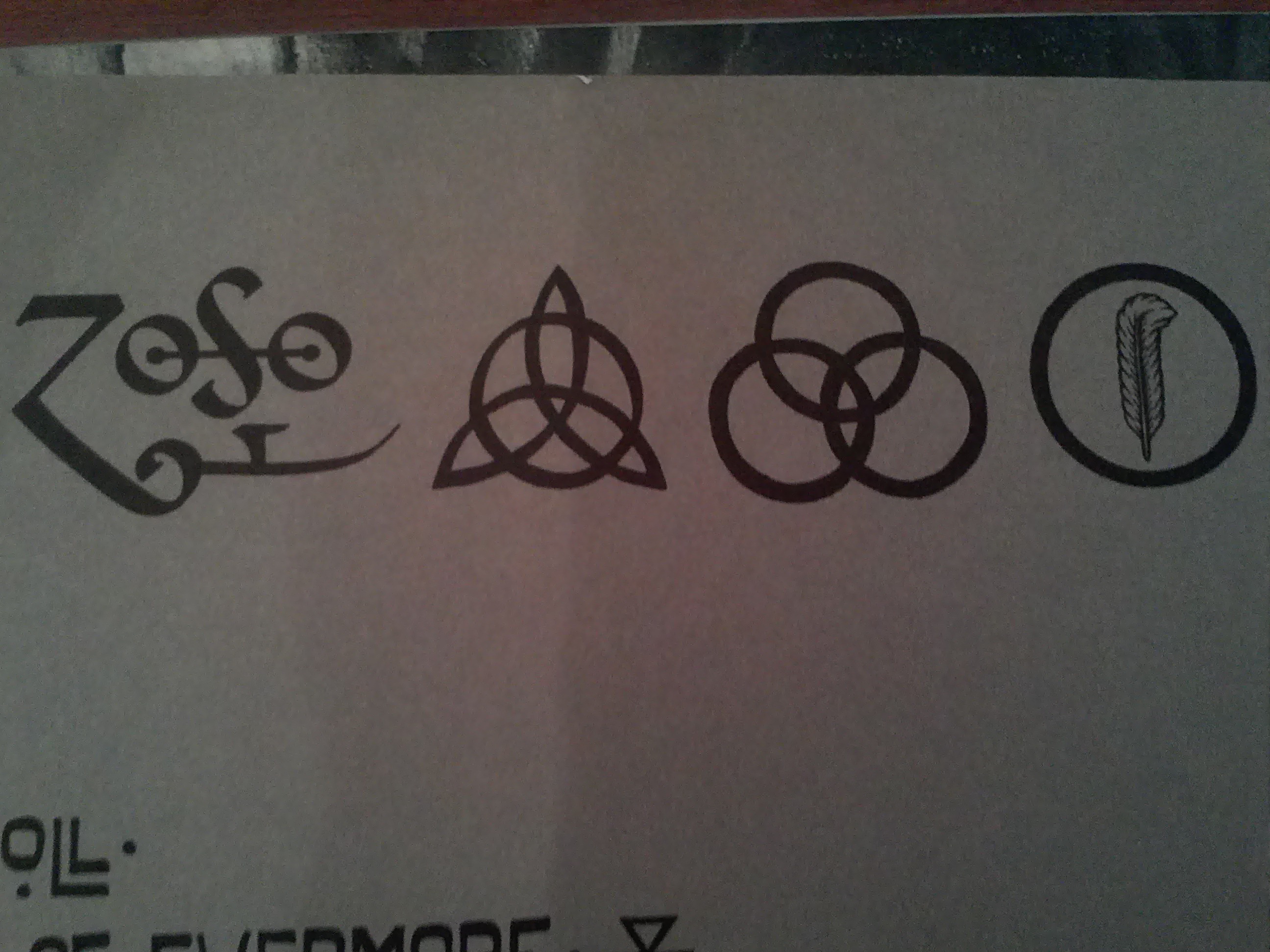

"Drummer John Bonham's symbol, the three interlocking rings, was picked by the drummer from [Rudolf Koch's Book of Signs]. It represents the triad of mother, father and child, but also happens to be the logo for Ballantine beer." (from the Wikipedia article on Led Zeppelin IV).

-


If you want to draw the Borromean rings, you'd draw three circles, as in the first figure above: but you'd want to indicate, somehow, that one ring is below another ring (aka the "Irish Trinity"): One more:
Scene from Stora Hammar stone

- I always think of them in the context of this quote:


